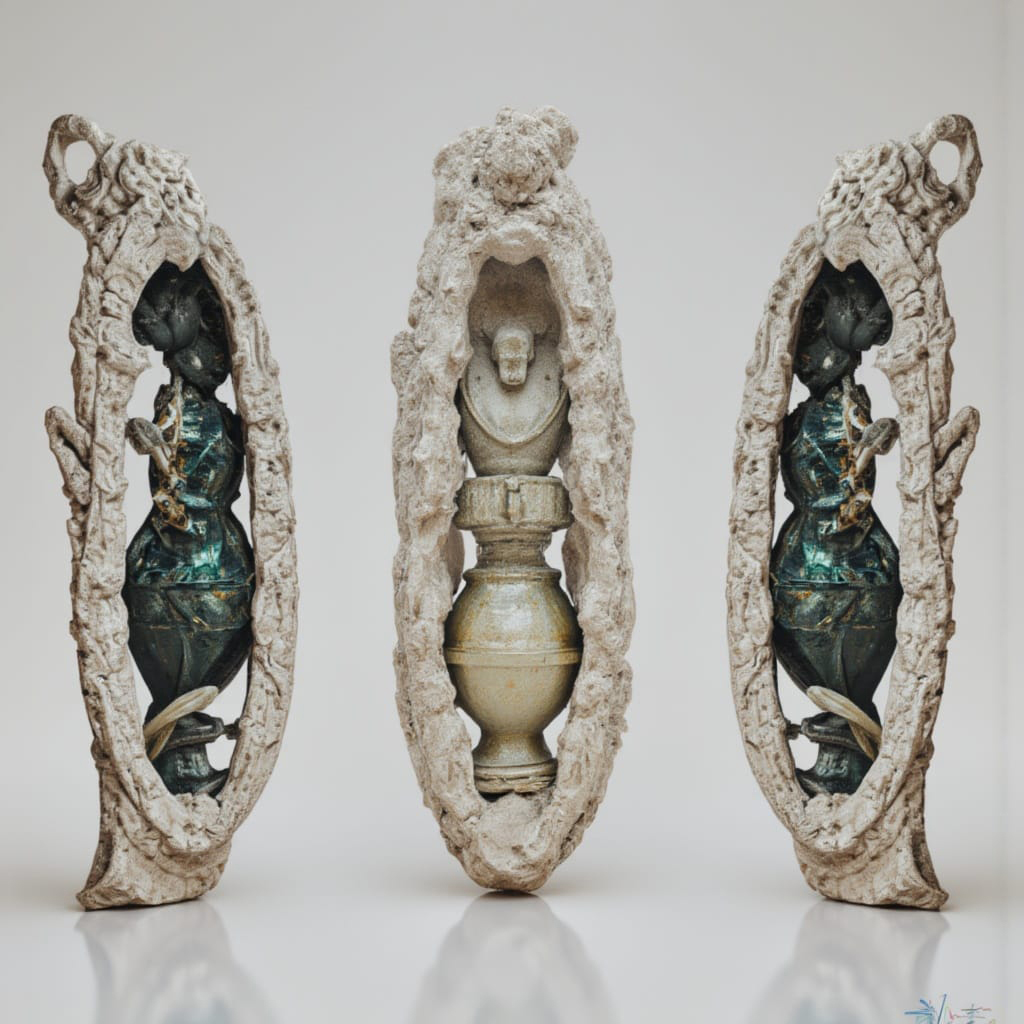AI, the archive, and my work.

In my work, I use AI—particularly text-to-image tools like Midjourney and DALL·E—not to represent history, but to critique how history is constructed, remembered, and often misremembered. These platforms generate images without direct reference to real artifacts, producing simulated visual records that feel archival but have no provenance. I see them as a kind of pseudo-archive: a black box of aesthetic patterning and bias.
I write prompts that draw from ancient codices, scientific classifications, or mythological fragments—language borrowed from the structures of institutional archives. The resulting images resemble tablets, ruins, or relics, but they’re entirely synthetic. I then translate these hallucinations into physical works: ceramics, mosaics, textiles, and sculptural fragments. They become material echoes of fictional pasts—both a critique of the archive and a proposal for how we might understand history in the age of AI.
More recently, I’ve also begun working with Meshy.ai to generate 3D models of imagined or historical forms from single reference images. These models are often inaccurate or broken—full of algorithmic assumptions and errors. I use them to create 3D prints or molds for ceramic, plaster, or concrete casting. These flawed reconstructions extend my investigation of archival instability into the spatial realm: they are not restorations but inventions of loss.
My process is grounded in theories by Foucault, Baudrillard, and Borges, who all question the reliability of archives, the instability of truth, and the recursive nature of historical interpretation. AI doesn’t retrieve knowledge—it invents it. I work with that failure as part of the artwork itself.
These pieces are not ironic—they are speculative artifacts. They ask: can something be both a fiction and a record? And what happens when machines start generating our shared visual memory?
My work doesn’t try to preserve a stable past. It examines the cracks, the distortions, and the algorithms shaping our sense of what’s real. In this way, AI is not just a tool—it’s a collaborator in exposing the archive’s inherent fragility.
Artwork: Calcified Vases (2025). AI rendering of speculative artifacts.